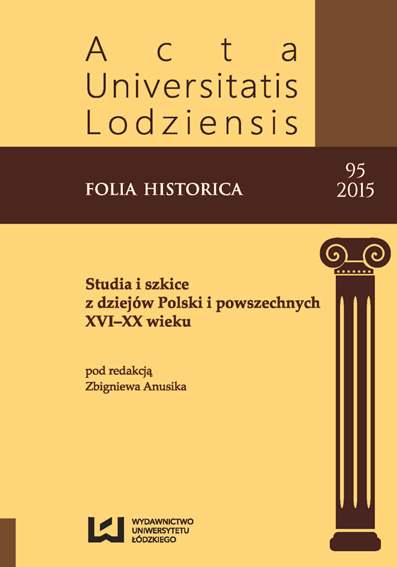Ugoda w Janowcu z października 1606 r. w świetle dwóch pism politycznych
DOI:
https://doi.org/10.18778/0208-6050.95.04Abstrakt
The reign of Sigismund III Vasa excites controversy today. One of the hardest events seems to be a conflict of the King and the nobility, which is known in the literature as Zebrzydowski rebellion. This dispute can be divided into two phases: the period from March 1606 to the Janowiec compromise on 4–8 October 1606, and the events of the years 1607–1609.
This article presents the position of opponents and supporters of the findings which were signed in the camp in Janowiec. There were compared two propaganda writings. They were written after agreement in Janowiec and they are part of the extensive editing of the source published by Jan Czubek. Although the two letters were written by two different groups, a common goal connects them – getting undecided representatives.
The agreement announced by Sigismund III on October 8, 1606 did not end the conflict. One if the main points of the agreement was the commitment of the King to convene the Polish Parliament, which was supposed to consider a settlement. Deferring a decision on the opening of the debate has led to increase in 1607 the tension among the Polish nobility. It was the beginning of the next phase of the rebellion, whose highlight was a battle of Guzów on July 6, 1607.
Pobrania
Pobrania
Opublikowane
Jak cytować
Numer
Dział
Licencja

Utwór dostępny jest na licencji Creative Commons Uznanie autorstwa – Użycie niekomercyjne – Bez utworów zależnych 4.0 Międzynarodowe.











